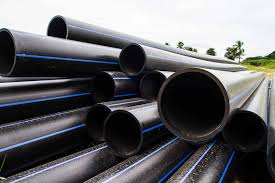Dec . 10, 2024 15:15 Back to list
ppr pipe for hot water product
Understanding PPR Pipes for Hot Water Applications
In recent years, the plumbing industry has witnessed a significant shift towards the adoption of modern materials that enhance performance and durability. Among these, Polypropylene Random Copolymer (PPR) pipes have emerged as a popular choice, particularly for hot water applications. This article delves into the properties, advantages, and applications of PPR pipes in the context of hot water systems.
What is PPR?
PPR, or Polypropylene Random Copolymer, is a type of thermoplastic polymer that exhibits excellent physical and chemical properties. It is characterized by its high resistance to temperature variations and pressures, making it ideal for transporting hot water. PPR pipes are produced in a variety of diameters and wall thicknesses to cater to different plumbing needs, and they are often joined using a fusion welding process, resulting in seamless connections that enhance integrity and reduce leak risks.
Advantages of PPR Pipes for Hot Water
1. Temperature Resistance One of the standout features of PPR pipes is their ability to withstand high temperatures, typically up to 95 degrees Celsius (203 degrees Fahrenheit) for continuous use. This makes them suitable for hot water application, including residential plumbing systems, heating systems, and industrial processes.
2. Corrosion Resistance Unlike metal pipes, PPR pipes do not corrode or rust over time, significantly enhancing their lifespan. This resistance to chemical degradation means they can safely transport hot water without the risk of contamination.
3. Lightweight and Easy to Install PPR pipes are considerably lighter than traditional piping materials such as copper or steel. This characteristic makes them easier to handle, transport, and install, reducing labor costs and installation time.
4. Low Thermal Conductivity PPR pipes have low thermal conductivity, which helps in maintaining the temperature of the hot water being transported. This property results in less heat loss, making the system more energy-efficient.
ppr pipe for hot water product

5. Cost-Effective While the initial investment for PPR pipes may be slightly higher than that for some other materials, the overall lifecycle cost is usually lower. Their durability reduces the need for frequent replacements and repairs, which translates to significant long-term savings.
Applications of PPR Pipes
PPR pipes are versatile and can be used in various applications concerning hot water transportation
- Residential Plumbing They are increasingly used in home plumbing systems for hot water supply, providing a reliable and safe solution for bathrooms, kitchens, and heating systems.
- Commercial Buildings PPR piping is also gaining traction in commercial plumbing projects, where lasting performance and safety are critical for systems like hot water heating and distribution.
- Industrial Uses In industrial settings, PPR pipes are employed in processes involving heated fluids, including various manufacturing processes, ensuring efficient and safe operations.
Conclusion
In summary, PPR pipes are a remarkable advancement in the field of plumbing, particularly for hot water applications. Their excellent resistance to high temperatures, corrosion, and easy installation make them a favored choice among professionals in the industry. Moreover, the long-term cost-effectiveness and efficiency of PPR pipes position them as a sustainable solution for modern plumbing systems. As demand for efficient plumbing solutions continues to rise, PPR pipes are set to play an essential role in shaping the future of hot water transportation in both residential and commercial applications.
-
High-Quality PVC Borehole Pipes Durable & Versatile Pipe Solutions
NewsJul.08,2025
-
High-Quality PVC Perforated Pipes for Efficient Drainage Leading Manufacturers & Factories
NewsJul.08,2025
-
High-Quality PVC Borehole Pipes Durable Pipe Solutions by Leading Manufacturer
NewsJul.08,2025
-
High-Quality PVC Borehole Pipes Reliable PVC Pipe Manufacturer Solutions
NewsJul.07,2025
-
High-Quality UPVC Drain Pipes Durable HDPE & Drain Pipe Solutions
NewsJul.07,2025
-
High-Quality Conduit Pipes & HDPE Conduit Fittings Manufacturer Reliable Factory Supply
NewsJul.06,2025

